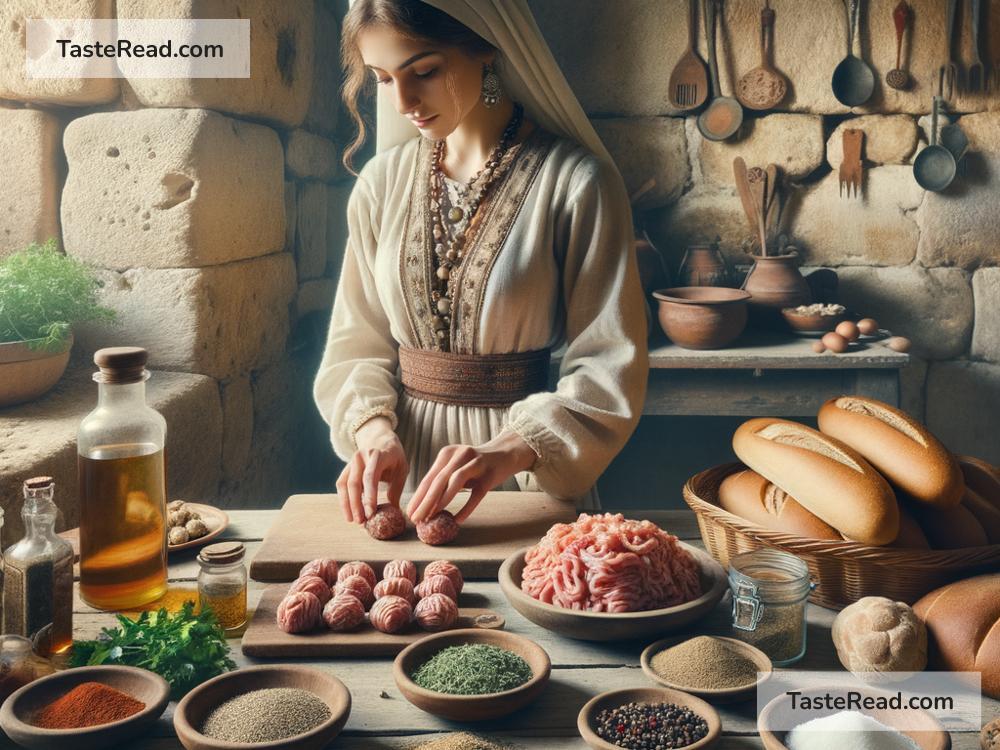The Origins of the First Meatball in Ancient Tales: A Journey Through Time
The humble meatball is beloved across the globe, whether it is served with spaghetti in Italy, simmered in soup in China, or spiced and roasted in the Middle East. But have you ever wondered about the origins of this delicious creation? Where did the idea of rolling meat into small balls first come from? Surprisingly, the story of the meatball is rooted in ancient history and travels through many cultures and traditions. Let’s take a journey back in time to explore the fascinating origins of the first meatball.
Ancient Beginnings: From Necessity to Invention
The story of the meatball began thousands of years ago. Early civilizations were experts at using every possible part of an animal to feed their families, wasting nothing. Meat was often chopped, minced, or ground to make it easier to stretch into multiple meals. What we now call “meatballs” may have started as a practical way to combine minced meat with other ingredients to create a dish that was nourishing, affordable, and easy to prepare.
The first “meatball-like” dishes were likely made not as balls but as patties, loaves, or small, hand-formed lumps. In ancient texts from around the world, we can find references to dishes similar to meatballs, showing us that humans everywhere had the same creative idea.
The Persian “Kofta”: A Key Ancestor
One of the earliest known ancestors of the modern meatball comes from ancient Persia (modern-day Iran). The dish was called “kofta”, a word that comes from the Persian verb koftan, which means “to grind” or “to pound.” Kofta was made by mixing ground or pounded meat (often lamb or beef) with spices and sometimes grains like rice or bulgur. It was shaped into balls or elongated forms and cooked in a variety of ways—grilled, fried, boiled, or simmered in a sauce.
Persian cuisine had a wide-ranging influence, traveling through trade routes like the Silk Road and spreading to regions such as India, the Middle East, and North Africa. As it spread, kofta took on new shapes, spices, and cooking techniques in every culture it touched.
Ancient Rome: The Libram Apicius
In ancient Rome, a cookbook called Apicius, attributed to Roman gourmand Marcus Gavius Apicius, gave us evidence that the Romans made their own version of meatballs. This cookbook dates back to the 4th or 5th century AD and includes recipes for finely minced meat mixed with ingredients like bread, wine, and spices. These mixtures were formed into small balls, which were either boiled or fried.
Romans loved experimenting with food, often blending ingredients from the far corners of their empire to create dishes that were both exotic and flavorful. Meatballs were likely enjoyed by the wealthy, served at elaborate feasts alongside other Roman delicacies. Though different from the meatballs we eat today, these ancient Roman creations clearly mark a step in the evolution of this dish.
China’s Yuan Dynasty and “Lion’s Head Meatballs”
Around the 13th century, during China’s Yuan Dynasty, large, soft meatballs known as “lion’s head meatballs” became popular. They were made from ground pork, mixed with seasonings and often served with vegetables in broth. The name came from their appearance—big, round meatballs that resembled the shape of a lion’s head.
Historically, these meatballs were considered a delicacy and were often served during special occasions. They reflect the Chinese philosophy of combining taste, texture, and presentation into one beautifully balanced dish.
The Middle Ages: Meatballs Mature in Europe
During the Middle Ages, meatballs spread across Europe. This period saw the rise of more sophisticated cooking techniques and the use of spices brought over from Asia and the Middle East. Recipes from medieval Europe describe creating “balls” of minced meat mixed with ingredients like eggs, cheese, herbs, and breadcrumbs. These were sometimes boiled, fried, or baked, depending on the chef’s preference.
In Sweden, these balls evolved into the iconic Swedish meatballs, often served with gravy and lingonberry jam. In Spain, minced meat became part of albóndigas, typically simmered in tomato-based sauces. Across the continent, meatballs adapted to local ingredients and cuisines, giving rise to countless beloved variations.
Global Traditions Come Together
As travelers, conquerors, and traders moved across the world, the meatball continued its journey. In the Middle East and the Mediterranean, small spiced meatballs became part of mezze platters and hearty stews. Turkey developed köfte, using flavors like parsley, mint, and cumin. Italy perfected its own style, often pairing meatballs with tomato sauce and pasta.
In modern times, the meatball has become a comfort food for many cultures, celebrated for its versatility, flavor, and history. Whether it is baked, fried, simmered, or grilled, the essence of the meatball lies in its ability to bring people together around a delicious meal.
Conclusion
The origins of the meatball stretch back through centuries and continents, blending practicality with creativity. From Persian kofta to Roman feasts, and from Chinese lion’s head meatballs to European delights, the story of the meatball is one of adaptation and shared culinary heritage. Next time you sit down to enjoy meatballs, remember that you’re not just eating a tasty dish—you’re savoring a piece of ancient history that has traveled far and wide to reach your plate.


